Single-cell transcriptomic analyses reveal distinct immune cell contributions to epithelial barrier dysfunction in checkpoint inhibitor colitis
- PMID: 38724705
- PMCID: PMC11673812
- DOI: 10.1038/s41591-024-02895-x
Single-cell transcriptomic analyses reveal distinct immune cell contributions to epithelial barrier dysfunction in checkpoint inhibitor colitis
Abstract
Immune checkpoint inhibitor (ICI) therapy has revolutionized oncology, but treatments are limited by immune-related adverse events, including checkpoint inhibitor colitis (irColitis). Little is understood about the pathogenic mechanisms driving irColitis, which does not readily occur in model organisms, such as mice. To define molecular drivers of irColitis, we used single-cell multi-omics to profile approximately 300,000 cells from the colon mucosa and blood of 13 patients with cancer who developed irColitis (nine on anti-PD-1 or anti-CTLA-4 monotherapy and four on dual ICI therapy; most patients had skin or lung cancer), eight controls on ICI therapy and eight healthy controls. Patients with irColitis showed expanded mucosal Tregs, ITGAEHi CD8 tissue-resident memory T cells expressing CXCL13 and Th17 gene programs and recirculating ITGB2Hi CD8 T cells. Cytotoxic GNLYHi CD4 T cells, recirculating ITGB2Hi CD8 T cells and endothelial cells expressing hypoxia gene programs were further expanded in colitis associated with anti-PD-1/CTLA-4 therapy compared to anti-PD-1 therapy. Luminal epithelial cells in patients with irColitis expressed PCSK9, PD-L1 and interferon-induced signatures associated with apoptosis, increased cell turnover and malabsorption. Together, these data suggest roles for circulating T cells and epithelial-immune crosstalk critical to PD-1/CTLA-4-dependent tolerance and barrier function and identify potential therapeutic targets for irColitis.
© 2024. The Author(s), under exclusive licence to Springer Nature America, Inc.
Conflict of interest statement
From August 9, 2021, B.L. is an employee of Genentech. M.D. has received consulting fees from Genentech, Partner Therapeutics, SQZ Biotech, AzurRx, Eli Lilly, Mallinckrodt Pharmaceuticals, Aditum, Foghorn Therapeutics, Palleon, Sorriso Pharmaceuticals, Generate Biomedicines, Asher Bio, Neoleukin Therapeutics, Moderna, Alloy Therapeutics, Third Rock Ventures, DE Shaw Research, Agenus, and Curie Bio; he is a member of the Scientific Advisory Board for Veravas, Monod Bio, Axxis Bio, and Cerberus Therapeutics. R.J.S. is a consultant to BMS, Marengo, Merck, Novartis, Pfizer, and Replimune. H.K. received research funding from Pfizer and Takeda. H.J. received consulting fees from Aditium Bio, Abbvie, and Takeda. H.J. serves on scientific advisory board of Vivante Health. D.J. reports grants and personal fees from Novartis, Genentech, Syros, Eisai. D.J. reports personal fees from Vibliome, PIC Therapeutics, Mapkure, Relay Therapeutics. D.J. reports grants from Pfizer, Amgen, InventisBio, Arvinas, Takeda, Blueprint, AstraZeneca, Ribon Therapeutics, Infinity that are outside the submitted work. G.M.B. has sponsored research agreements through her institution with: Olink Proteomics, Teiko Bio, InterVenn Biosciences, Palleon Pharmaceuticals. G.M.B. served on advisory boards for: Iovance, Merck, Nektar Therapeutics, Novartis, and Ankyra Therapeutics. G.M.B. consults for: Merck, InterVenn Biosciences, Iovance, and Ankyra Therapeutics. She holds equity in Ankyra Therapeutics. KP is a consultant to Santa Ana Bio. N.H. holds equity in and advises Danger Bio/Related Sciences, is on the scientific advisory board of Repertoire Immune Medicines and CytoReason, owns equity and has licensed patents to BioNtech, and receives research funding from Bristol Myers Squibb and Calico Life Sciences. KLR has received advisory board fees from SAGA diagnostics and institutional research support from BMS. A.C.V. received consulting fees from Merck and BMS. A.C.V. has a financial interest in 10X Genomics. The company designs and manufactures gene sequencing technology for use in research, and such technology is being used in this research. Dr. Villani’s interests were reviewed by The Massachusetts General Hospital and Mass General Brigham in accordance with their institutional policies. M.F.T., K.S., K.M., P.S., N.S., J.T., M.N., L.Z., N.P.S., A.T., S.R., B.Y.A., L.T.N., J.H.C., T.E., Y.S., K.H.X., V.J., C.J.P., T.S., R.G., P.Y.C., do not have competing interest to declare.
Figures
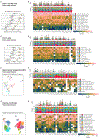
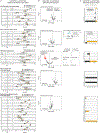
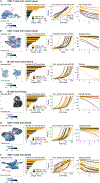
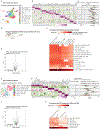
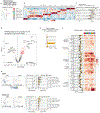
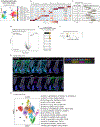
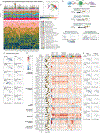
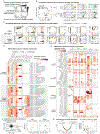
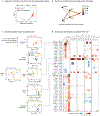
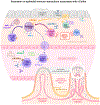

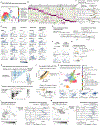

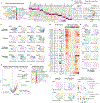
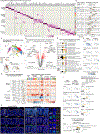
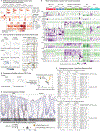
References
-
- Arnaud-Coffin P et al. A systematic review of adverse events in randomized trials assessing immune checkpoint inhibitors. Int. J. Cancer 145, 639–648 (2019). - PubMed
-
- Chen JH, Pezhouh MK, Lauwers GY & Masia R Histopathologic Features of Colitis Due to Immunotherapy With Anti-PD-1 Antibodies. Am J Surg Pathol 41, 643–654 (2017). - PubMed
-
- Verschuren EC et al. Clinical, Endoscopic, and Histologic Characteristics of Ipilimumab-Associated Colitis. Clin Gastroenterol Hepatol 14, 836–842 (2016). - PubMed
MeSH terms
Grants and funding
- K08 DK127246/DK/NIDDK NIH HHS/United States
- T32DK007191/U.S. Department of Health & Human Services | NIH | National Institute of Diabetes and Digestive and Kidney Diseases (National Institute of Diabetes & Digestive & Kidney Diseases)
- T32 DK007191/DK/NIDDK NIH HHS/United States
- R01 AI169188/AI/NIAID NIH HHS/United States
- DP2CA247831/U.S. Department of Health & Human Services | NIH | National Cancer Institute (NCI)
- DP2 CA247831/CA/NCI NIH HHS/United States
- T32 CA207021/CA/NCI NIH HHS/United States
- R00 CA259511/CA/NCI NIH HHS/United States
- P30 DK043351/DK/NIDDK NIH HHS/United States
- T32 AR007258/AR/NIAMS NIH HHS/United States
- K08 CA273547/CA/NCI NIH HHS/United States
- K08DK127246/U.S. Department of Health & Human Services | NIH | National Institute of Diabetes and Digestive and Kidney Diseases (National Institute of Diabetes & Digestive & Kidney Diseases)
- R01 AG068390/AG/NIA NIH HHS/United States
- K08 HL157725/HL/NHLBI NIH HHS/United States
LinkOut - more resources
Full Text Sources
Molecular Biology Databases
Research Materials
Miscellaneous

